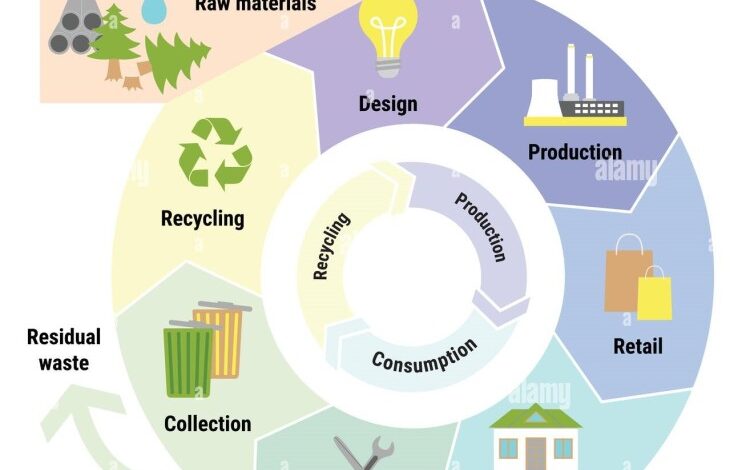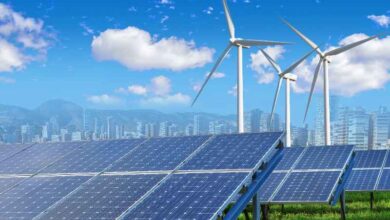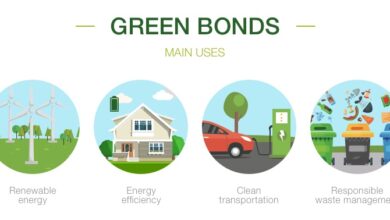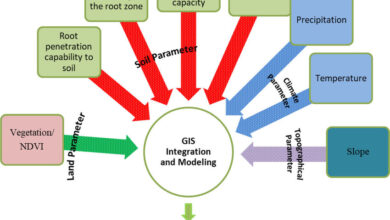The Role of the Circular Economy in Addressing the Climate Crisis

The climate crisis is one of the most significant challenges of our time. As global temperatures continue to rise, we are seeing the devastating impacts of climate change on ecosystems, economies, and societies. While there are many ways to address the climate crisis, one approach that has gained increasing attention in recent years is the circular economy. This article will explore the role of the circular economy in addressing the climate crisis and how it can help us transition toward a more sustainable future.
Introduction to the Circular Economy
The circular economy is an economic system that aims to keep resources in use for as long as possible and reduce waste. It is based on the principles of designing out waste and pollution, keeping products and materials in use, and regenerating natural systems. The circular economy is a departure from the traditional linear economy, which relies on the extraction of raw materials, production of goods, consumption, and disposal.
The Climate Crisis and the Circular Economy
The climate crisis is caused by the accumulation of greenhouse gases in the atmosphere, primarily carbon dioxide, which is released through the burning of fossil fuels. The circular economy can play a significant role in reducing greenhouse gas emissions by addressing the root causes of the climate crisis. Here are some of the ways in which the circular economy can contribute to climate action:
1. Reducing Resource Use
The circular economy aims to reduce the use of resources by keeping them in use for longer periods. This can be achieved by designing products and services for longevity, repairability, and recyclability. By reducing the need for new materials and products, we can reduce the carbon footprint associated with the extraction and production of raw materials.
2. Promoting Sustainable Consumption
The circular economy also promotes sustainable consumption by encouraging the use of products and services that are designed to be reused, repaired, or recycled. This can be achieved through business models such as product-as-a-service, which provides consumers with access to products rather than ownership. By reducing the need for new products, we can reduce the carbon footprint associated with their production.
3. Supporting Renewable Energy
The circular economy can also support the transition to renewable energy by promoting the use of renewable energy sources such as wind and solar power. By reducing our dependence on fossil fuels, we can reduce greenhouse gas emissions and mitigate the impacts of the climate crisis.
4. Reducing Waste
Finally, the circular economy can help reduce waste by promoting the reuse, repair, and recycling of products and materials. This can be achieved through initiatives such as extended producer responsibility, which makes manufacturers responsible for the disposal of their products at the end of their life. By reducing waste, we can reduce the carbon footprint associated with the disposal of products and materials.
Examples of Circular Economy in Action
There are many examples of circular economy initiatives that are already contributing to climate action. Here are some examples:
1. Circular Fashion
The fashion industry is one of the most resource-intensive industries, with high levels of waste and pollution. Circular fashion initiatives aim to reduce the environmental impact of the industry by promoting sustainable practices such as using recycled materials, designing for longevity, and creating closed-loop supply chains.
2. Food Waste Reduction
Food waste is a significant contributor to greenhouse gas emissions, with up to one-third of all food produced going to waste. Circular food initiatives aim to reduce food waste by promoting sustainable practices such as composting, anaerobic digestion, and redistribution of surplus food.
3. Remanufacturing
Remanufacturing involves taking used products and components and restoring them to their original condition. This can help reduce waste and the need for new products, reducing the carbon footprint associated with their production.
. Renewable Energy
Renewable energy is a key component of the circular economy, as it helps to reduce our dependence on fossil fuels and promotes sustainable energy sources. Many countries around the world are investing in renewable energy technologies such as wind, solar, and hydropower, as well as energy storage solutions such as batteries.
5. Circular Cities
Circular cities are designed to promote sustainability and reduce waste by implementing circular economy principles in urban planning and development. This can include initiatives such as green spaces, bike lanes, public transportation, and smart waste management systems.
Challenges to Implementing a Circular Economy
While the circular economy offers many benefits for addressing the climate crisis, there are also several challenges to implementing it. Some of these challenges include:
1. Lack of Awareness
Many people are still unfamiliar with the concept of the circular economy and may not understand its benefits. There is a need for education and awareness-raising to help people understand the importance of transitioning toward a circular economy.
2. Policy and Regulatory Barriers
There may be policy and regulatory barriers to implementing the circular economy, such as existing regulations that favor the linear economy. There is a need for supportive policy frameworks that incentivize circular economy practices.
3. Infrastructure and Investment
Transitioning to a circular economy requires significant investment in infrastructure and technology. This can be a barrier for many businesses and governments, especially in developing countries.



